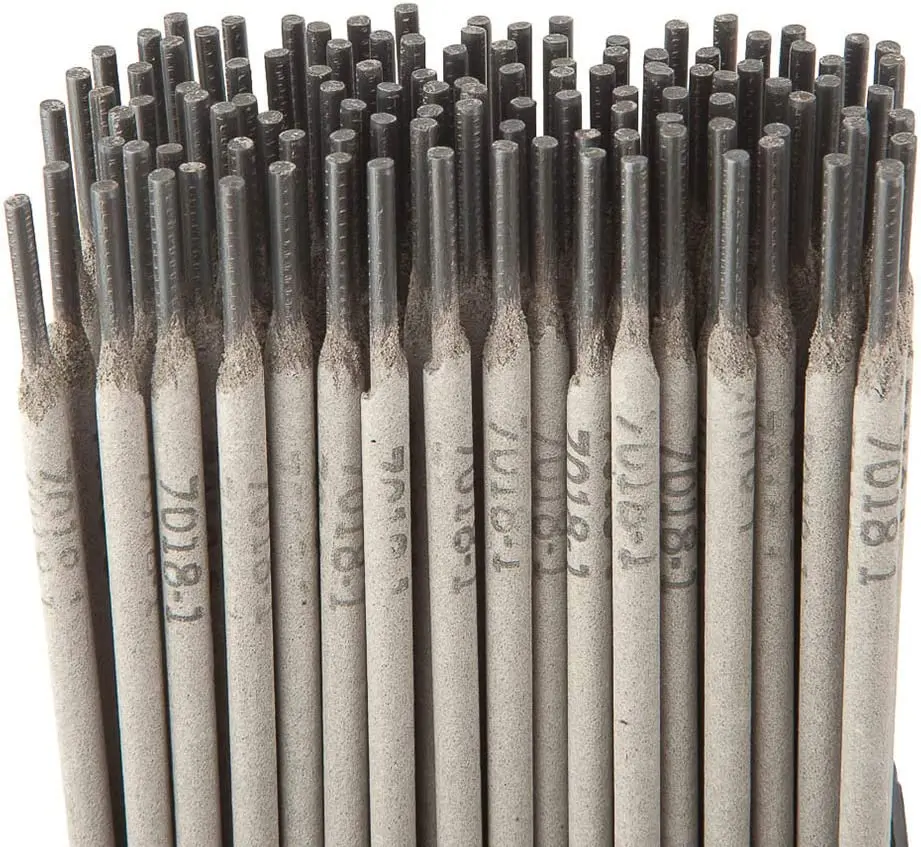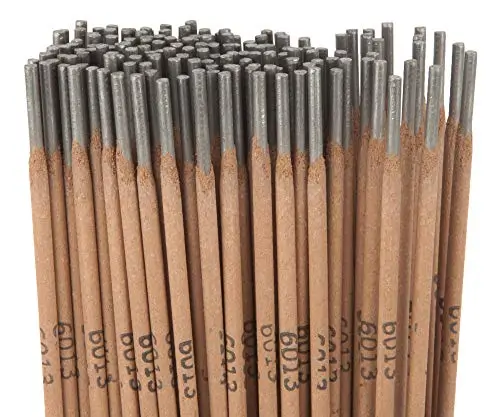The 6013 welding rod is versatile, with easy slag removal and a stable arc, suitable for beginners and general-purpose welding. The 7018 welding rod offers a stronger, low-hydrogen weld with higher tensile strength, ideal for structural steel and demanding applications, but requires more skill and proper storage.
As a welder, I’ve had the opportunity to work with various welding electrodes, and two of the most common ones are the 6013 and 7018 welding rods. Both are widely used in the welding industry, and each has unique properties and applications.
In this comprehensive comparison, I will explore the differences between these two popular welding electrodes to help you understand their advantages and disadvantages.
Table of Contents
Quick Summary
- 6013 electrode: versatile, suitable for general fabrication and light structural work
- 7018 electrode: used for critical applications, provides stronger welds and better mechanical properties
- Both electrodes: usable in all positions (flat, horizontal, vertical, overhead)
- 6013: stable arc, easy slag removal, beginner-friendly
- 7018: requires more skill for consistent arc, excellent weld quality
Composition and classification
The 6013 welding rod is a mild steel electrode classified as AWS E6013, while the 7018 is a low-hydrogen electrode classified as AWS E7018.
The first two digits in the classification indicate the tensile strength of the deposited weld metal. For instance, “60” in 6013 denotes 60,000 psi and “70” in 7018 indicates 70,000 psi.
The third digit in the classification signifies the welding position, with “1” being all positions for 6013 and 7018.
The last digit represents the coating type and current; 6013 is a high titania potassium coating, while 7018 is an iron powder low hydrogen coating.

Applications
6013 electrodes are versatile and suitable for various applications, such as general fabrication, light structural work, sheet metal, and automotive repairs. They are ideal for novice welders due to their forgiving nature and ease of use.
On the other hand, 7018 electrodes are preferred for more critical applications, such as pressure vessels, boilers, bridges, and heavy construction projects. They are typically used in situations that require stronger welds and excellent mechanical properties.
Welding positions
6013 and 7018 welding rods can be used in all positions – flat, horizontal, vertical, and overhead. However, due to the fluidity of the 6013 weld puddle, it is easier to control in various positions, especially for inexperienced welders.
The 7018 provides a more stable arc but requires better technique and skill to achieve a consistent, high-quality weld in different positions.
Weld quality
The 7018 welding rod generally produces higher quality welds with better mechanical properties than the 6013.
The low hydrogen content in the 7018 electrode helps minimize hydrogen-induced cracking and provides excellent ductility, toughness, and impact resistance. The 6013 electrode, although easier to use, may result in weaker welds with lower tensile strength and ductility.
Penetration
6013 electrodes offer moderate penetration, suitable for thin materials or lap and fillet welds. 7018 electrodes provide deeper penetration and are better suited for welding thicker materials and making full penetration groove welds.
Arc stability and slag removal
The 6013 welding rod offers a more stable arc, which is easier to initiate and maintain, making it beginner-friendly. It also produces a fast-freezing slag that is easy to remove, allowing for smooth and clean welds.
The 7018 electrode requires more skill to maintain a consistent arc, and the slag can be slightly more challenging to remove, though it also provides a smooth, clean finish.

Polarity
The 6013 welding rod is compatible with AC, DC+, and DC- currents, making it more versatile and widely applicable. The 7018 electrode is mainly used with DC+ or AC currents, but the AC variant (7018AC) is specifically designed to cater to AC welding machines.
Amperage
The amperage range for 6013 and 7018 welding electrodes varies depending on the rod’s diameter. The following are general amperage guidelines for different diameters of these electrodes:
6013 Welding Rod:
- 1/16 inch: 20-45 Amps
- 3/32 inch: 40-90 Amps
- 1/8 inch: 75-130 Amps
- 5/32 inch: 110-170 Amps
- 3/16 inch: 150-220 Amps
7018 Welding Rod:
- 1/16 inch: 20-50 Amps
- 3/32 inch: 50-100 Amps
- 1/8 inch: 90-160 Amps
- 5/32 inch: 130-210 Amps
- 3/16 inch: 180-280 Amps
Moisture Resistance
Keeping welding rods dry is essential for ensuring consistent and high-quality welds. Moisture absorbed by the coating of the electrode can cause various welding issues, such as porosity, hydrogen-induced cracking, and reduced mechanical properties.
For 7018 welding rods, proper storage and handling are crucial, as they are low-hydrogen electrodes. They are more sensitive to moisture absorption and must be kept dry in a rod oven at around 250°F (120°C) to maintain their low-hydrogen characteristics. If 7018 electrodes are exposed to moisture, they should be re-dried according to the manufacturer’s guidelines before use.
While 6013 welding rods are not as sensitive to moisture as 7018 electrodes, it is still essential to store and handle them properly. They should be kept in a cool, dry place, preferably in a sealed container or an electrode storage cabinet, to minimize the risk of moisture absorption. 6013 rods don’t typically require a rod oven, but exposing them to moisture for prolonged periods can still cause welding issues.
Abrasion Resistance
The 6013 and 7018 welding electrodes are primarily designed for mild steel applications and may not offer exceptional abrasion resistance compared to specialized hard-facing electrodes. The 7018 electrode generally provides better mechanical properties, such as tensile strength and ductility, than the 6013 electrode. This can lead to improved wear resistance under certain conditions.
For applications that require high abrasion resistance, it’s recommended to use specific hard-facing electrodes or welding consumables designed to provide a wear-resistant surface on the welded components. These specialized electrodes typically contain elements such as chromium, tungsten, or other carbides to enhance the wear resistance of the weld deposit.
Conclusion
The choice between the 6013 and 7018 welding electrodes depends on the specific requirements of your welding project. If you are a beginner or working on lighter, non-critical applications, the 6013 electrode might be the better option due to its ease of use and versatility.
However, if you are an experienced welder working on critical applications that require stronger, high-quality welds with excellent mechanical properties, the 7018 electrode would be the superior choice.


